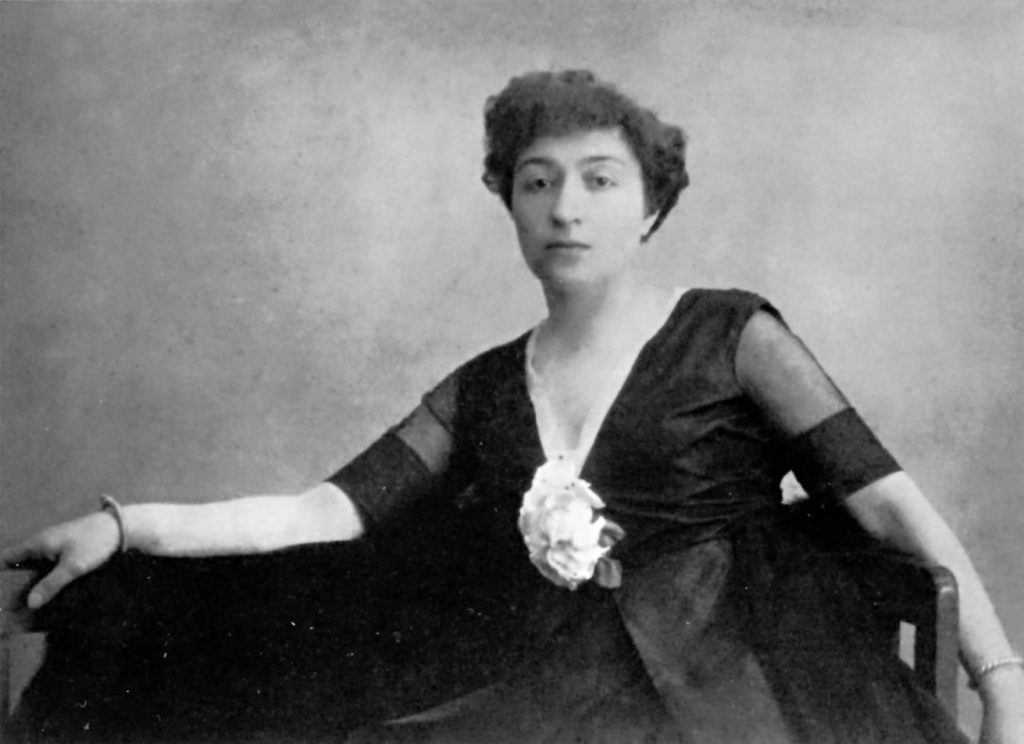
1882 -1949
“Oleksandra Ekster entered the history of art primarily due to her reformist ideas in scenography. For the first time, she suggested using complex multi-tiered structures instead of flat painted decorations, thus occupying the entire space of the stage, not just its floor. The second theatrical innovation is costumes”.
Oleksandra Hryhorovych was born on January 18 (5), 1882 in the city of Bialystok, Grodno Province (now the territory of Poland). Her father, Oleksandr Hryhorovych, is Belarusian, and her mother is Greek.When she was two years old, the family moved to Smila. Father soon got a job in Kyiv. For 35 years, Kyiv has become Oleksandra’s hometown.
In Kyiv, she graduated from Olhyn Gymnasium, studied with Mykola Pymonenko at the Kyiv Art School together with Oleksandr Bohomazov and Oleksandr Arkhypenko, and privately attended Serhiy Svitoslavskyi’s studio.
In 1903 she married Mykola Ekster, a lawyer from Kyiv, and gained world fame with his German surname.
In 1907 she first came to Paris and, thanks to Apollinaire, met Picasso and Braque, thus finding herself in the heart of European art.
Three of her performances at the Chamber Theater have earned her worldwide acclaim: “Famira Kifared” (1916), Salome (1917), Romeo and Juliet (1921)The combination of artistic experience of Cubism, Futurism, Suprematism and the new plastic drama of Poltava resident Oleksandr Tairov forever changed the idea of theater.
Art critic Abram Efros called her sceneries “a solemn parade of cubism.” Ekster was also called “Picasso of scenography”.
Beginning in 1914, her cubism exploded with all the colors of the rainbow, she was fascinated by Ukrainian folk art. She became an abstractionist.
In 1918, the artist opened a Kyiv studio of decorative art, where all the creative people of the city gathered. The future masters of scenography Pavlo Chelishchev, Vadym Meller, Anatol Petrytskyi, Oleksandr Khvostenko-Khvostov and painting – El Lysytskyi, Solomon Epshtein, Oleksandr Tyshler, Isaak Rabynovych and many others who traveled around the world worked in the studio. In her Kyiv studio, she taught abstract art even to children, offering them to illustrate a fairy tale not with a plot, but with the help of rhythms. Oleksandra Ekster befriended Les Kurbas, but did not work together, although the director invited.
In the early 1920s, Ekster worked on costumes for the film adaptation of Yakov Protazanov’s “Aelita”, but her sketches remained unrealized. The director embodied his own ideas, in which, however, the influence of Ekster is felt. In Kyiv, Ekster created scenery for ballets by Bronislava Nizhynska, the sister of the famous prime minister of Diaghilev’s “Russian Ballet” Vatslav Nizhynskyi, who was born here.
Alexandra paid attention to lighting as an object of dramatic action and invited an electrician to co-stage the plays. It is possible that Kyiv is the birthplace of light effects and the transformation of the illuminator into a light director.